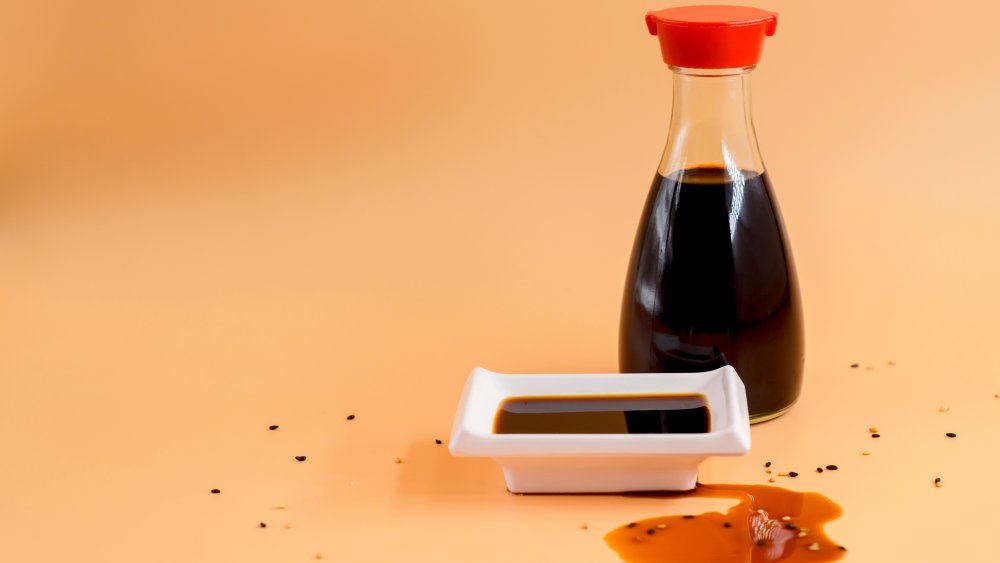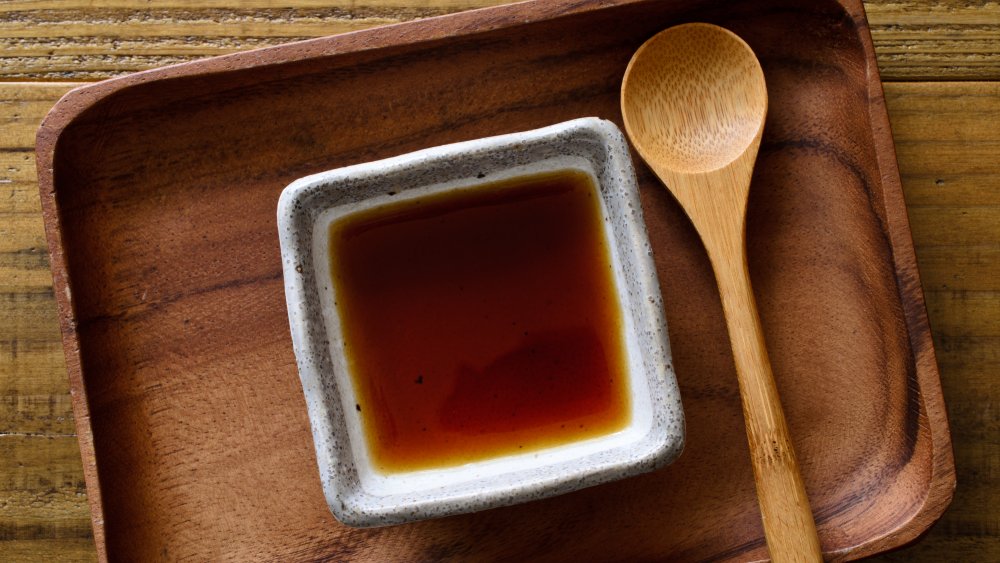The Real Difference Between Soy Sauce And Ponzu Sauce
Much like the country it hails from, Japanese food can range anywhere from culturally rich and complex, like the sukiyaki, to delicately simple like sashimi. According to Taiken Japan, soy sauce and ponzu are two of the top sauces within the Japanese cooking culture. Which, when you think about it, is no surprise in the case of soy sauce, which is easily and readily found at any Japanese restaurant across the United States.
Normally, when you sit down at a Japanese restaurant, your table is probably already equipped with soy sauce, so many American diners are more knowledgeable about its existence. But ponzu? The Kicthn points out that it's not quite as famous outside of Japan in the same way that soy sauce is. But, when it's been around for over three millennia (via Serious Eats), can you really blame soy sauce for being that much more popular?
So, what's the difference between soy sauce and ponzu?
Soy sauce and ponzu sauce may have a slightly similar color, but they are two completely different sauces and are paired distinctly with different dishes due to their different flavor profiles (via Spiceography). Ponzu is made using rice wine, rice vinegar, bonito fish flakes, and citrus (via Serious Eats). Because of its ingredients, ponzu gives off a much lighter, delicate, and citrusy taste when used as a marinade or a dipping sauce. Soy sauce, on the other hand, is essentially fermented soybean liquid with salt water. Its flavor is rich and salty.
According to Spiceography, ponzu pairs well with things like tempura, gyoza, meats, and works well as a base for a salad dressing. Although soy sauce can be used as a substitute, it is normally used to give foods a bit of salty punchiness, but can work well in things like meats, fish, and veggies (via Kikkoman). It's also worth pointing out that there's a hybrid sauce that combines ponzu that soy sauces. It's technically known as ponzu shoyu but is frequently referred to as just ponzu.

